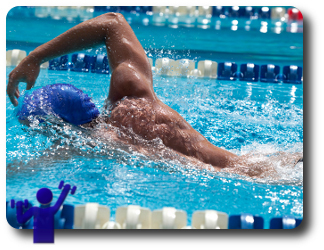 The contemporary model of preparing competitive swimmers in a given year is based on the following sequence of training and competition: preseason, early season, competitive season, taper, championship season, and recovery or off-season. For highly trained swimmers the competitive season usually takes the form of domestic competition or international competitions.
The contemporary model of preparing competitive swimmers in a given year is based on the following sequence of training and competition: preseason, early season, competitive season, taper, championship season, and recovery or off-season. For highly trained swimmers the competitive season usually takes the form of domestic competition or international competitions.
The championship season typically involves the national championships, often doubling as the national team selection trials, and then the major international competition for that particular year.
Once the competition schedule has been established, the training plan can be prepared with the goal of maximizing the performance of the swimmer for the competitive and championship seasons. For international swimmers, the entire season is typically 44-48 weeks in length with a short break permitted after completion of the championship season. The length of each of the different training phases will vary according to the individual circumstances of the swimmer, team, and coach. In recent years, the international swimming calendar has become more crowded and as a consequence the annual training plan has become more fragmented and complex.
A common view of experienced coaches is that this trend has been beneficial for sprint swimming, but detrimental to distance swimming. The relative plateauing of world records in women's distance swimming provides some support for this view.
The evolution of the modem training plan can be viewed from three perspectives. The traditional approach to the annual plan and individual training sessions has centered on the different energy systems as they apply to competitive swimming. The three energy systems model has enjoyed great popularity in coach education, but its relevance for the practicing coach is somewhat limited. Clearly there are many other factors, apart from the proportional contribution from each of the three energy systems, that need to be considered. To address some of these long-standing concerns a new approach that integrates physiological, biomechanical, and psychological aspects of exercise and training has been proposed (Noakes 2000). Irrespective of the conceptual framework, coaches and swimmers are primarily interested in the prescription of training velocities. The most appropriate means of prescribing training velocities is achieved through evaluation of the competitive model that identifies the performance requirements of each individual event (Mason 1999).
